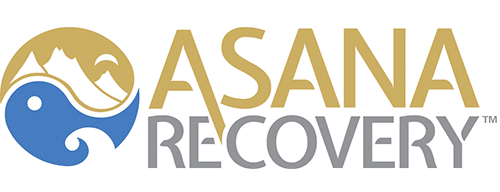Statistics showed there was a 25% increased risk of drug use for every standard deviation increase of neuroticism, but for every standard deviation decrease in openness to experience, agreeableness, and conscientiousness, there was a 25%, 45%, and 35% increased risk of drug use, respectively. (1) Drug abuse is still a problem that individuals in America face, but many individuals do not understand what the main cause of drug use is. Studies show that individuals use drugs not always because of a lack of income, but primarily because of emotion dysregulation.
In the United States, there was a three-fold increase in overdose deaths by prescription painkillers and a five-fold increase in death by heroin. (2) The majority of individuals, however, tend to use cannabis, opiates, cocaine, amphetamine, methamphetamine, and their derivatives. (3) Research conducted by Christopher S. Carpenter, Chandler B. McClellan, and Daniel I. Rees showed that for the majority of substance use, there is no statistically significant relationship between the likelihood of past month or year substance usage and state unemployment rates. (4) Sutin, Evans, and Zonderman showed that neuroticism, openness, agreeableness, and conscientiousness correlated with drug use across all ages and for African Americans and whites. (5) These studies suggest that race, age, and economic status may not be the primary causes of drug abuse amongst individuals, however, this does not mean that low income cannot create emotion dysregulation that can lead to substance abuse. For example, economic downturns have been shown to correlate with increases in ecstasy and heroin use and decreases in LSD, crack, and cocaine use. (6) There does not seem to be a direct relationship between economic status and drug use because while lower-income individuals may use heroin and ecstasy, other individuals of stable or high income may use LSD or painkillers.
Pentz and colleagues found a relation between emotion regulation, planning and decision-making, and impulse control and developing drug habits amongst adolescents. (7) Specifically, individuals prone to emotional distress and antagonism have been shown to be at greater risk for drug use, regardless of their economic status, which suggests that personality traits are not the consequence of drug use, but the cause of drug use. (8) The root of what leads individuals to start using drugs seems to be emotion-based to the extent that these individuals use drugs as a coping mechanism for their negative emotions like high neuroticism and hostility. Statistics showed that low conscientiousness alone was a risk factor for substance use in individuals above 125% of the poverty line, yet unrelated to individuals below the poverty line. (9) Economic status in relation to drug use overall seems to be wavering, therefore a more direct cause of drug use needs to be pinpointed if an effective solution is to be found.
Right now, research suggests that if negative emotions can be alleviated, then drug use may also be alleviated. More work needs to be focused on early warning signs to find the problem before it becomes a problem so that drug abuse can be evaded.
If you are concerned that you or your loved one may be developing a substance use disorder, the Asana Recovery Center may be able to help. Call us at (949) 438-4504 to learn more about our alcohol and drug treatment program today.
Sources
1. Sutin, A. R., Evans, M. K., & Zonderman, A. B. (2012, December 20). Personality traits and illicit substances: The moderating role of poverty. Drug and Alcohol Dependence, Volume 131(3), https://www.sciencedirect.com/science/article/pii/S0376871612004206
2. Carpenter, C. S., McClellan, C. B., & Rees, D. I. (2017, March). Economic conditions, illicit drug use, and substance use disorders in the united states. Journal of Health Economics, Volume 52, https://www.sciencedirect.com/science/article/pii/S0167629616305732?_rdoc=1&_fmt=high&_origin=gateway&_docanchor=&md5=b8429449ccfc9c30159a5f9ae aa92ffb
3. Büttner, A. (2017, February). The neuropathology of drug abuse. Current Opinion in Behavioral Sciences, Volume 13, https://www.sciencedirect.com/science/article/pii/S2352154616301358?_rdoc=1&_fmt=high&_origin=gateway&_docanchor=&md5=b8429449ccfc9c30159a5f9ae aa92ffb
4. Carpenter, C. S., McClellan, C. B., & Rees, D. I., Economic conditions, illicit drug use, and substance use disorders in the united states.
5. Sutin, A. R., Evans, M. K., & Zonderman, A. B. (2012, December 20). Personality traits and illicit substances: The moderating role of poverty.
6. Carpenter, C. S., McClellan, C. B., & Rees, D. I., Economic conditions, illicit drug use, and substance use disorders in the united states.
7. Kelly, T. H., & Bardo, M. T. (2016, June 01). Emotion regulation and drug abuse: Implications for prevention and treatment. Drug and Alcohol Dependence, Volume 163, https://www.sciencedirect.com/science/article/pii/S0376871616001095?_rdoc=1&_fmt=high&_origin=gateway&_docanchor=&md5=b8429449ccfc9c30159a5f9ae aa92ffb
8 & 9. Sutin, A. R., Evans, M. K., & Zonderman, A. B. (2012, December 20). Personality traits and illicit substances: The moderating role of poverty.



